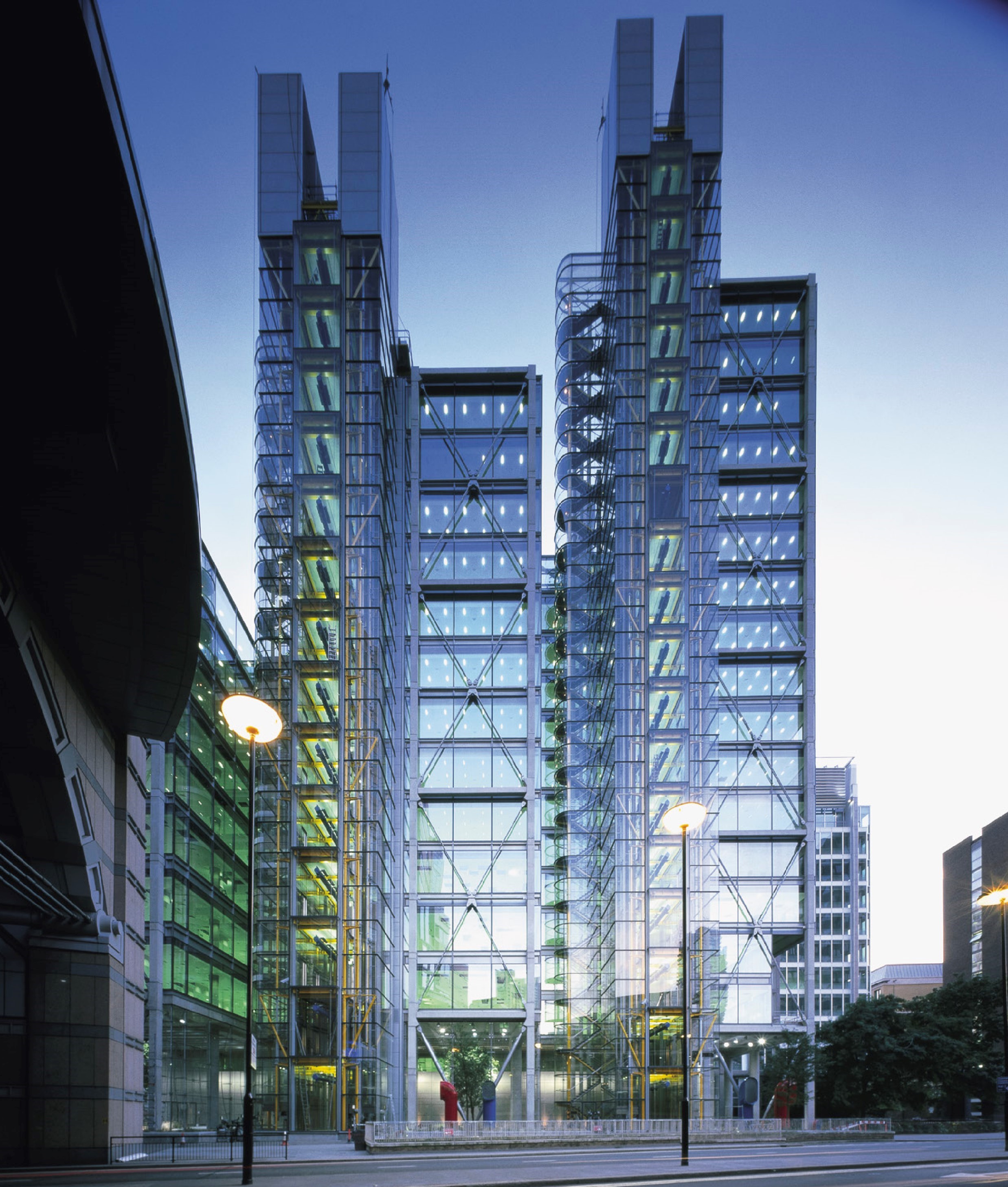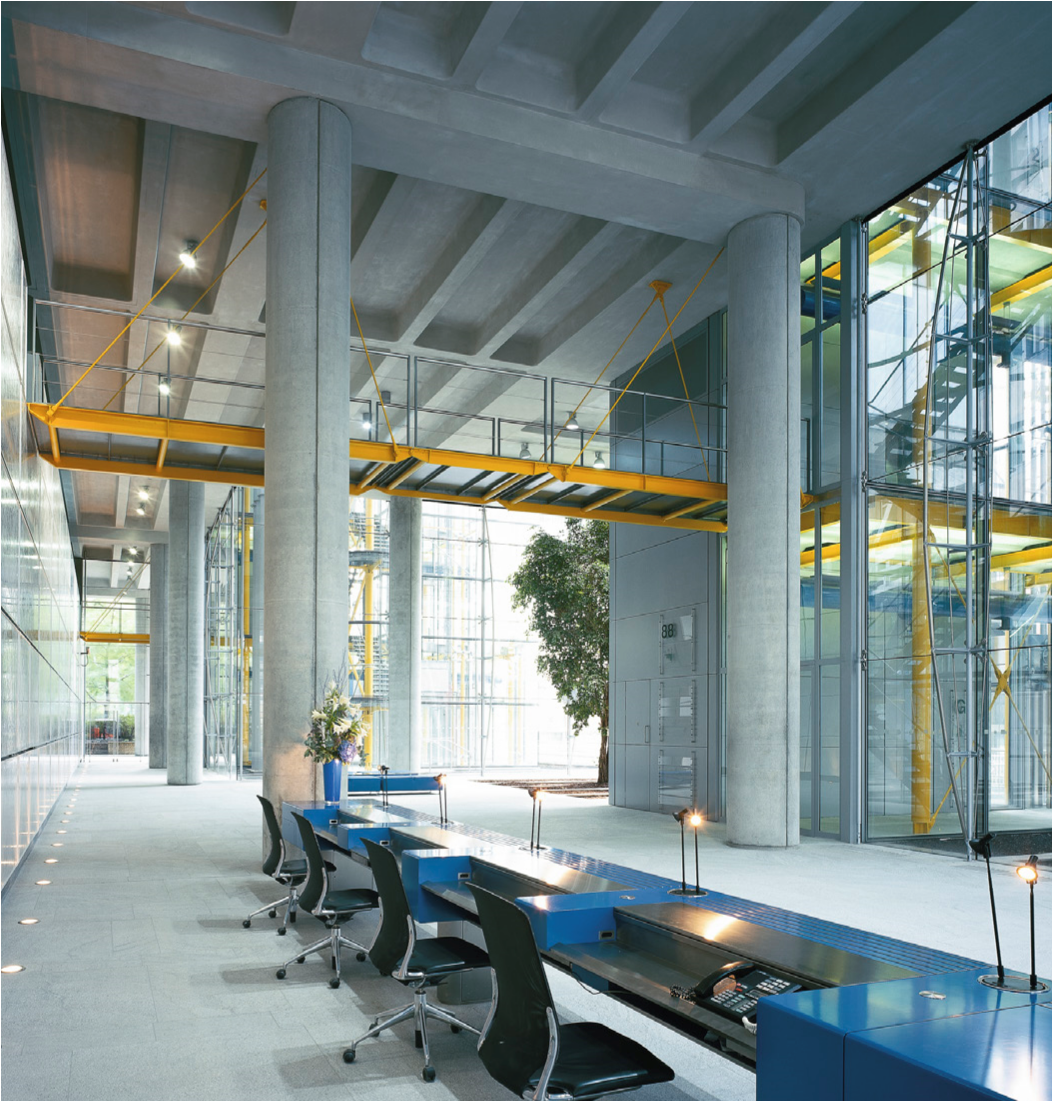88 Wood Street
“With its unapologetic modern facade, the building combines a jagged profile in an elegant concrete frame ... oozing an airy spirit full of honesty but not lacking in bravado.” Don Barker, Architecture Week
88 Wood Street demonstrates the potential for speculative commercial development that does not compromise on quality and enhances the public domain.
The site was formerly occupied by a 1920s telephone exchange – delays in securing the demolition of this building, combined with the onset of an economic recession in the 1990s, led to the cancellation of a scheme for a prestige banking headquarters. A larger scheme was designed in 1993–94, with speculative letting in mind.
This building is arranged as three linked blocks of office accommodation that step up from eight storeys on Wood Street, where the context includes two listed buildings, to 14 and finally 18 storeys to the west, responding to the taller built topography towards London Wall. The connections between blocks provides a very large floor area that can be easily subdivided. By using the extensive basement of the telephone exchange for the building plant, roof levels are kept largely free.
The office wings are constructed of in-situ concrete, contrasting with the lightweight, steel-framed service towers. The use of brilliant colour enhances their impact – air intakes and extracts at street level are also brightly coloured, contrasting with the neutrality of the occupied floors. The façades of the main office floors are glazed from floor to ceiling to maximise daylight and views – in addition, levels 8,12 and 16 lead directly onto roof terraces with spectacular views over the City.
Though built to a strict commercial budget, 88 Wood Street contains many innovative elements. Its triple-glazed façade is formed of single panels of highly transparent float glass. The inner faces of the external panes have a low emissivity coating which further reduces solar gain, while the cavity between the double glazed units and the third panel is fitted with motorised, integral horizontal blinds with perforated slats. Photocells on the roof monitor light conditions and adjust the angle of the blinds, thus minimising glare, heat gain and energy consumption.
Project information:
- Place: London, UK
- Date: 1993—1999
- Client: Daiwa Europe Properties
- Cost: £52 million
- Area: 33,073m²
- Structural Engineer: Ove Arup & Partners
- Services Engineer: Ove Arup & Partners
- Quantity Surveyor: Gardiner & Theobald
- Project Manager: D J Williams & Associates Ltd
- Construction Manager: Laing Management Ltd
- Main Contractor: Kajima/Laing Management Joint Venture
- Fit-Out Contractor: Kajima/Hazama Joint Venture
- Landscape Architect: Edward Hutchison
Awards:
2002
- The American Institute of Architects London/UK Chapter
- Excellence in Design Award Winner
2000
- RIBA Award/Stirling Shortlist
- Civic Trust Award
- Royal Fine Art Commission Trust Award
- Royal Academy Summer Exhibition Bovis/Lend Lease
- Award for Best Architectural Exhibit
Click here to see the full job sheet.
--RSHP
[edit] Related articles on Designing Buildings Wiki
Featured articles and news
One of the most impressive Victorian architects. Book review.
RTPI leader to become new CIOB Chief Executive Officer
Dr Victoria Hills MRTPI, FICE to take over after Caroline Gumble’s departure.
Social and affordable housing, a long term plan for delivery
The “Delivering a Decade of Renewal for Social and Affordable Housing” strategy sets out future path.
A change to adoptive architecture
Effects of global weather warming on architectural detailing, material choice and human interaction.
The proposed publicly owned and backed subsidiary of Homes England, to facilitate new homes.
How big is the problem and what can we do to mitigate the effects?
Overheating guidance and tools for building designers
A number of cool guides to help with the heat.
The UK's Modern Industrial Strategy: A 10 year plan
Previous consultation criticism, current key elements and general support with some persisting reservations.
Building Safety Regulator reforms
New roles, new staff and a new fast track service pave the way for a single construction regulator.
Architectural Technologist CPDs and Communications
CIAT CPD… and how you can do it!
Cooling centres and cool spaces
Managing extreme heat in cities by directing the public to places for heat stress relief and water sources.
Winter gardens: A brief history and warm variations
Extending the season with glass in different forms and terms.
Restoring Great Yarmouth's Winter Gardens
Transforming one of the least sustainable constructions imaginable.
Construction Skills Mission Board launch sector drive
Newly formed government and industry collaboration set strategy for recruiting an additional 100,000 construction workers a year.
New Architects Code comes into effect in September 2025
ARB Architects Code of Conduct and Practice available with ongoing consultation regarding guidance.
Welsh Skills Body (Medr) launches ambitious plan
The new skills body brings together funding and regulation of tertiary education and research for the devolved nation.
Paul Gandy FCIOB announced as next CIOB President
Former Tilbury Douglas CEO takes helm.

























